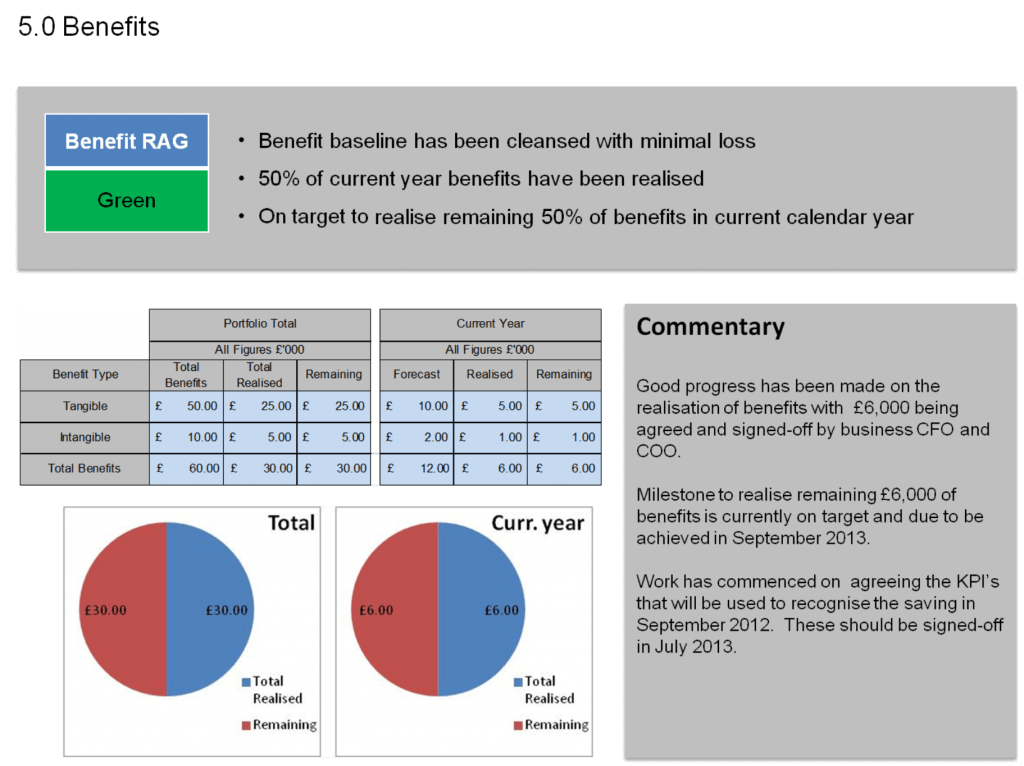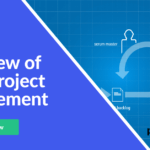It is interesting that in the majority of cases, a project or programme is launched in order to deliver some form of benefit. However, for some reason, many project managers and PMO’s focus on delivering the project on time, on budget and to agreed scope without keeping track on the delivery of the benefits.
While in theory, delivering the agreed scope to budget should result in the delivery of benefits, in many cases this is not the case. It is not unusual for the project manager to think that they are not responsible for delivery of the associated benefits.
The problem usually occurs when the benefits are not directly linked or to the same time line as project deliverables. You may wish to implement a new computer system that automates a process. This could result in the benefit of reduction of costs through less resources. However, it may be the case that the resources can not be released from the current manual process until the system has been up and running for 6 months.
In this scenario, the project manager delivers the system and then closes the project. The view of the project manager is that it is a success as the agreed scope has been delivered on time and on time budget. However, the benefits will not be realized until the FTE have been redeployed.
So to avoid the risk of not realizing agreed benefits, you should think about how the different components of project and PMO management can help.
Business Case
In an earlier post it mentioned how the business case is important, it is the contract between sponsor and organization. Agreement to the business case means the organization agrees to provide funding in return for a stated benefit.
The sponsor is accountable to ensure that they (or their delegate – project manager) delivers the benefits. Therefore, the PMO should ensure that the delivery of benefits are tracked and ensure the project plan includes a benefit realization strategy.
KPI’s
The realization of benefits can be a very emotive subject, especially at the point of realization. To avoid this, the sponsor and project manager should look to include sensible KPI’s that, if achieved, means the benefit can be recognized.
Ideally, the KPI’s should be agreed early, even included in the business case, as this is usually a lot less emotive. Agreeing them early also helps eliminate an industry around benefit tracking and realization.
Benefit Tracking
A smart PMO should look to agree meaningful benefit milestones as part of the plan that can be tracked. This helps monitor where benefits are at risk.
Change Control
Include criteria that require a change control to be raised when benefits are going to vary from those in the original business case. This ensures that everyone knows that the benefits are real and must be delivered (not simply used to make the business case look better to get funding).
Reporting
Ensure benefit realization and tracking are included in the regular steering committees. This ensures that everyone is focused on delivering the benefits and shines the spotlight where there is risk of benefit erosion.
When people realize they will be held accountable to deliver against a business case, you will see behaviors change resulting in more accurate proposals.
Summary
Benefit tracking and realization is the primary reason for choosing to invest resources to deliver a project. It is the PMO’s responsibility to be the custodian of ensuring benefits are delivered and providing senior management with the information to make informed decisions (including stopping projects that are not delivering against their business case).







